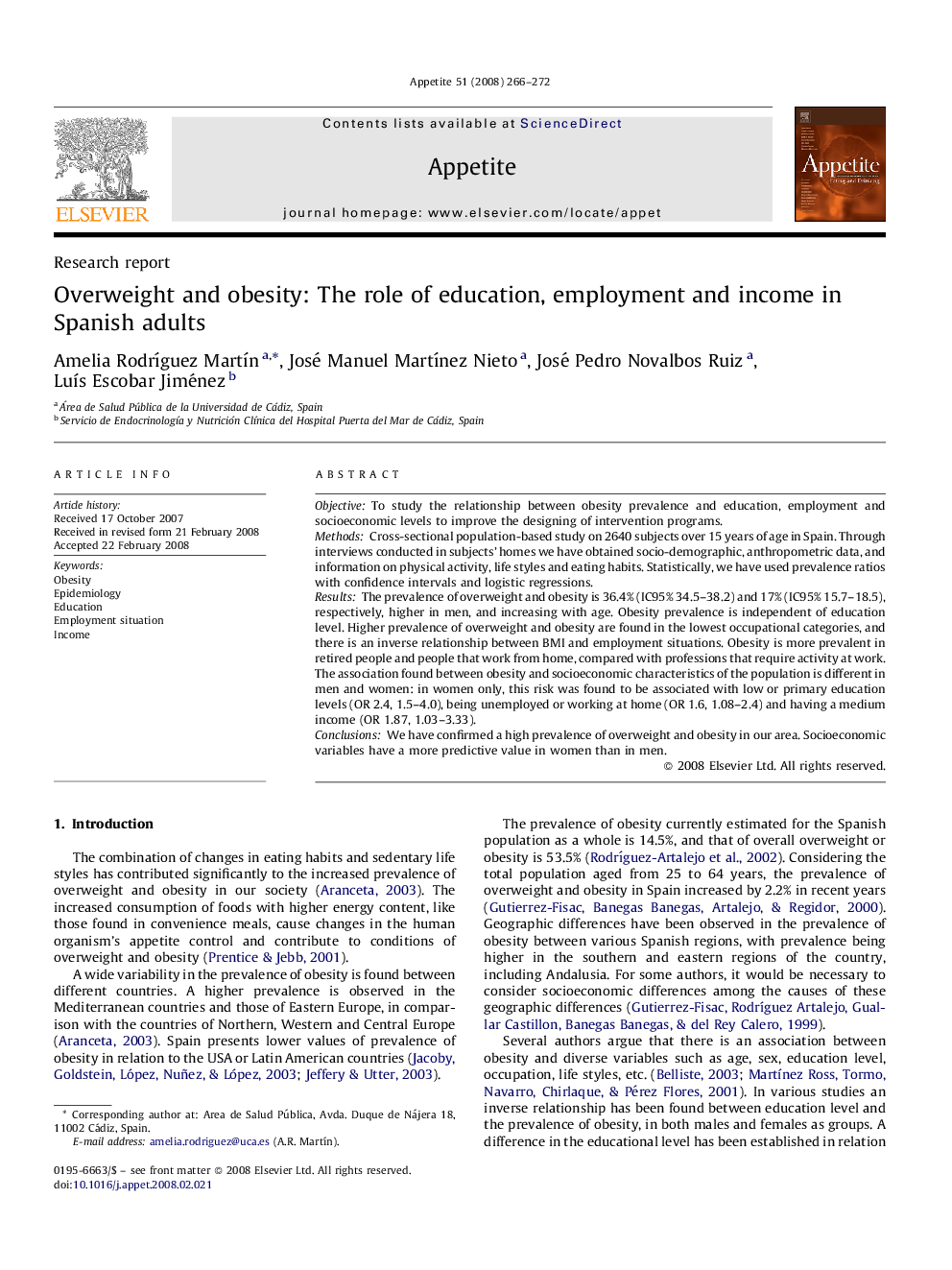| Article ID | Journal | Published Year | Pages | File Type |
|---|---|---|---|---|
| 941177 | Appetite | 2008 | 7 Pages |
ObjectiveTo study the relationship between obesity prevalence and education, employment and socioeconomic levels to improve the designing of intervention programs.MethodsCross-sectional population-based study on 2640 subjects over 15 years of age in Spain. Through interviews conducted in subjects’ homes we have obtained socio-demographic, anthropometric data, and information on physical activity, life styles and eating habits. Statistically, we have used prevalence ratios with confidence intervals and logistic regressions.ResultsThe prevalence of overweight and obesity is 36.4% (IC95% 34.5–38.2) and 17% (IC95% 15.7–18.5), respectively, higher in men, and increasing with age. Obesity prevalence is independent of education level. Higher prevalence of overweight and obesity are found in the lowest occupational categories, and there is an inverse relationship between BMI and employment situations. Obesity is more prevalent in retired people and people that work from home, compared with professions that require activity at work. The association found between obesity and socioeconomic characteristics of the population is different in men and women: in women only, this risk was found to be associated with low or primary education levels (OR 2.4, 1.5–4.0), being unemployed or working at home (OR 1.6, 1.08–2.4) and having a medium income (OR 1.87, 1.03–3.33).ConclusionsWe have confirmed a high prevalence of overweight and obesity in our area. Socioeconomic variables have a more predictive value in women than in men.
